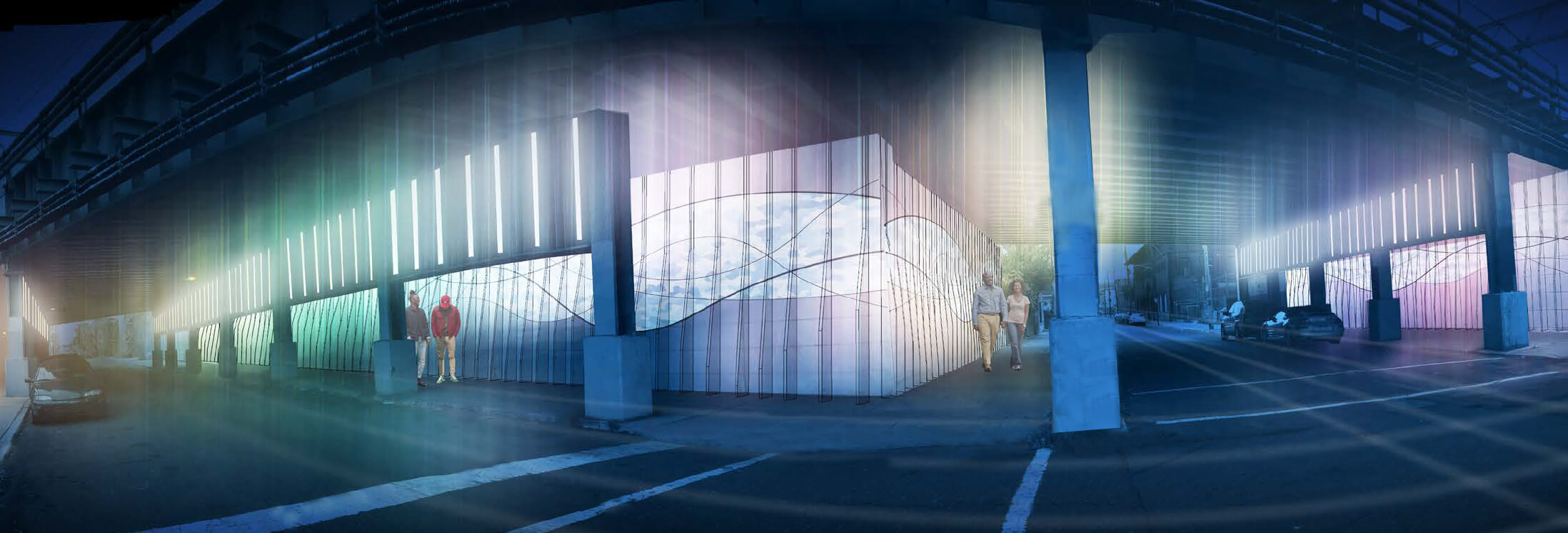The Community Design Collaborative recently honored an outstanding team of architects, landscape architects, lighting designers, cost estimators, and artists for their “exemplary interdisciplinary collaboration” on re-imagining the SEPTA rail viaduct in Philadelphia.
Every year, the Community Design Collaborative recognizes volunteers for design excellence and outstanding community service. This year, The Lighting Practice was recognized as part of the team as follows:
Outstanding Team Interdisciplinary for exemplary interdisciplinary collaboration for Making Connections: Conceptual Design for Under the Viaduct for the City of Philadelphia on behalf of the North Central Philadelphia Choice Neighborhood partners.
- Ballinger: Jake Shoemaker, Natalie Amodei, Jennifer Cappella, Charlotte DiGiorgio, Christina Dreibholz, Peter Elsbeck, Kate Hallinan, Stacey Lindbloom, Bonnie Netel
- Ground Reconsidered Landscape Architecture: Karen Skafte, Brad Thornton
- The Lighting Practice: Helen Diemer, David Seok, Lauren Tyler
- International Consultants Inc.: Lou Johnson
- Artists: Jennie Shanker and Jeff Carpenter
The design team collaborated on improvements to transform three SEPTA rail underpasses into passages between numerous communities in Philadelphia. The designs, according to Community Design Collaborative, “…will provide models for improving underpass streetscapes in North Central and citywide.”
TLP worked with the design teams on all three underpasses. Helen Diemer, David Seok, and former TLP designer Lauren Tyler were each part of a team. The team met with the community several times during the design process, and one of their most important requests was to provide more light in the underpasses
“It is not so much about the quantity of light, but the quality of light,” David explained. “The Spring Garden Connector was referenced several times throughout the course of the design. There were a lot of adjacent spaces from Temple University that had too much light, like the football field, and apartment buildings with harsh flood lighting from above. We aimed to be balance what was an appropriate light levels for a residential neighborhood.”
The design team recognized that each underpass was unique. Through they were only a block away from each other, Philadelphia’s neighborhoods re truly defined block by block. As a result, community members representing each underpass gave their thoughts to portray vastly different identities. In response, the light strategies that the team utilized for each underpass were specific to that site, physically, and in relationship to the people that represented the surrounding neighborhoods.
The Community Design Collaborative provides pro bono preliminary design services to nonprofit organizations in the greater Philadelphia area. As the design continues for this project, the final result may differ.
Making Connections Across North Central
Community Design Collaborative | December 2016
North Central Philadelphia has plenty of assets—a busy regional rail station, Cousin’s Supermarket, the Pearl Theatre, Penrose Recreation Center, and a constellation of community schools and playgrounds. However, North Central’s residents don’t always tap into everything the neighborhood has to offer because it often requires them to walk through one of several dank, dark, and littered underpasses of a rail viaduct.
North Central is currently the focus of a Choice Implementation Grant, awarded by the U.S. Department of Housing and Urban Development through a competitive grant process. When Philadelphia’s Division of Housing and Community Development (DHCD) applied for the grant, the agency emphasized the importance of connecting the communities to the east and west of the viaduct.
Choice Neighborhoods stands out from past HUD funding programs like Hope VI by providing funding for community improvements beyond housing. In North Central, HUD allocated $24 million for 297 units of affordable, mixed-income homeownership housing. An additional $9 million was earmarked for Critical Community Improvements to provide educational and social services programming for residents, spur economic development, and make physical improvements that will benefit the community as a whole.







